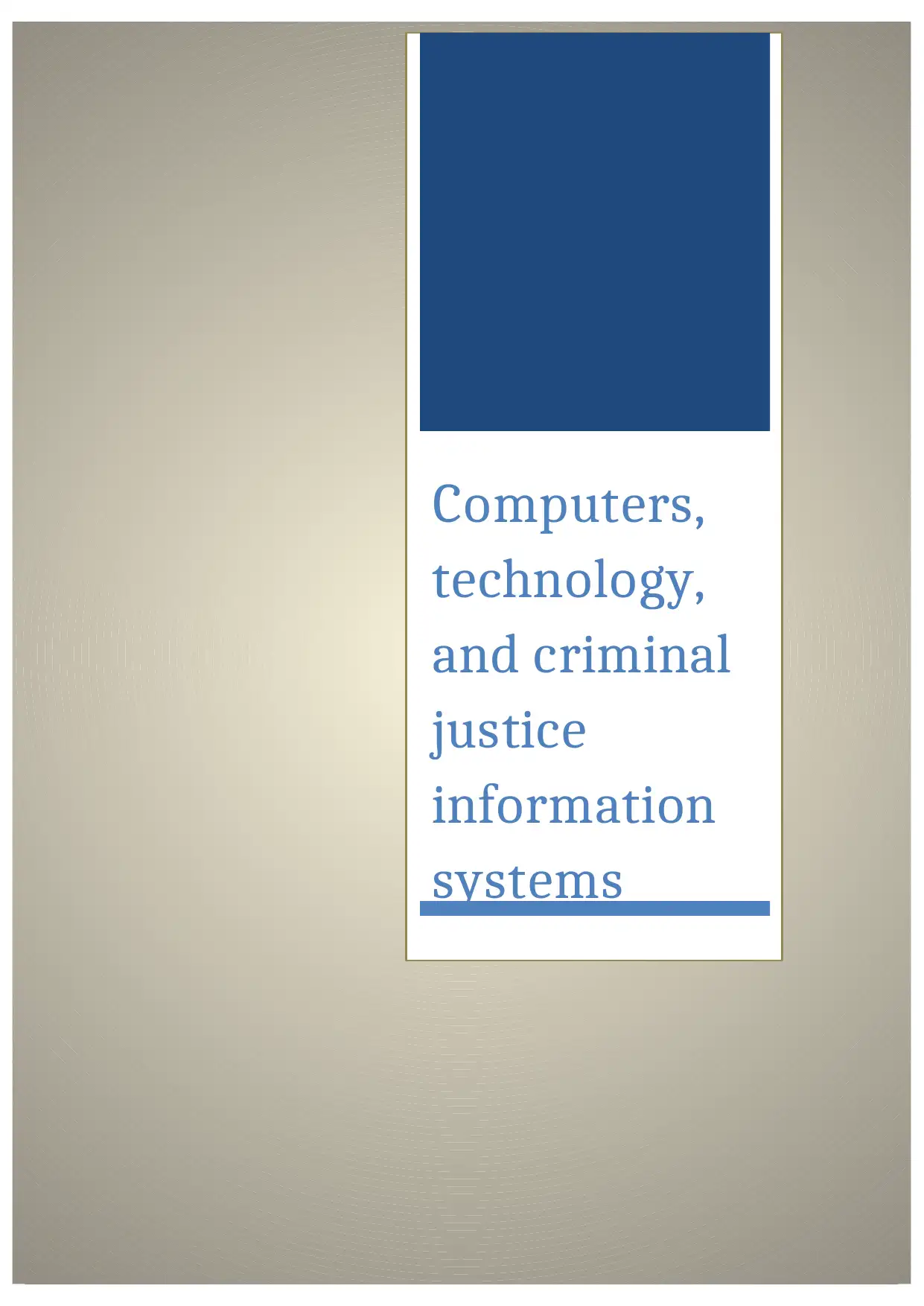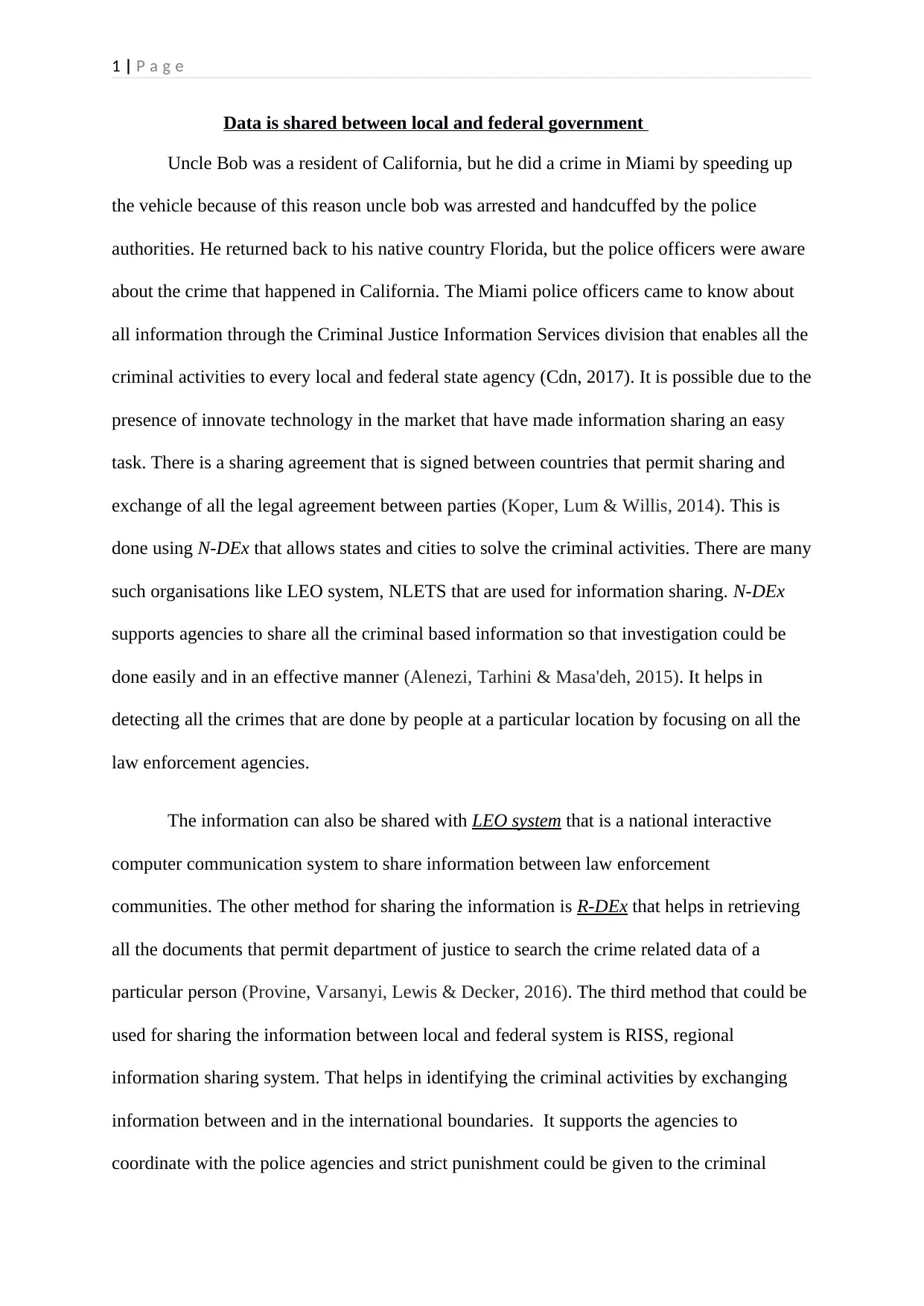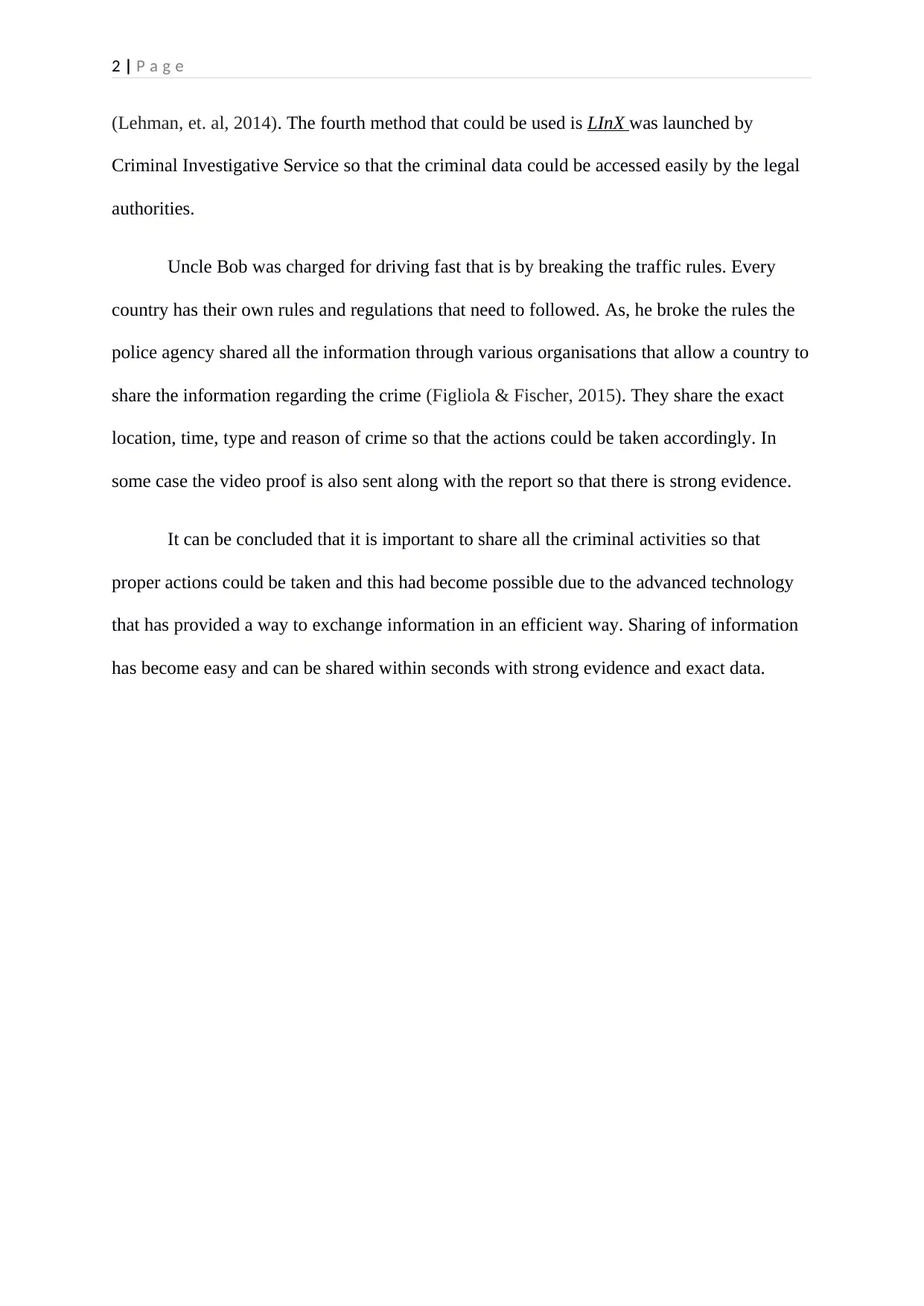Impact of Technology on Data Sharing in Criminal Justice Systems
VerifiedAdded on 2023/06/09
|4
|873
|168
Essay
AI Summary
This essay examines the sharing of data between local and federal government entities within the context of criminal justice, using the hypothetical scenario of 'Uncle Bob' to illustrate the practical application of these systems. It details how the Criminal Justice Information Services (CJIS) division facilitates the exchange of criminal activity data between local and federal agencies through innovative technologies. The essay further discusses various organizations and systems like N-DEx, LEO system, NLETS, R-DEx, RISS, and LInX, which support the sharing of criminal information for effective investigation and law enforcement. It emphasizes the importance of these systems in tracking and addressing criminal activities across different jurisdictions, highlighting how technology has revolutionized the speed and efficiency of information exchange, providing strong evidence and exact data for appropriate action.
1 out of 4











![[object Object]](/_next/static/media/star-bottom.7253800d.svg)